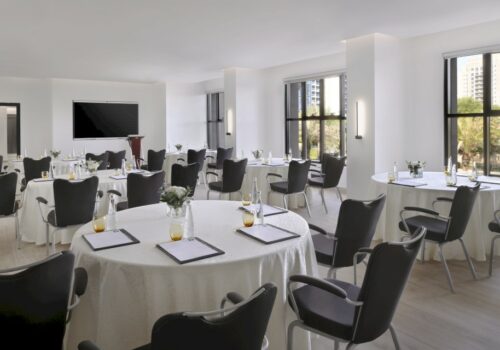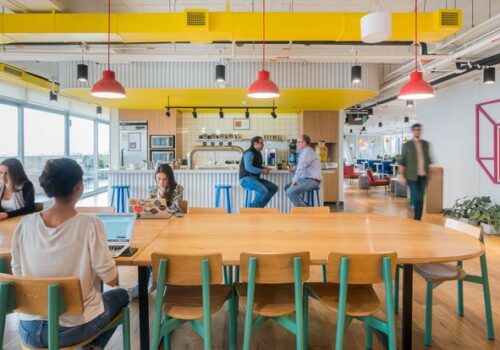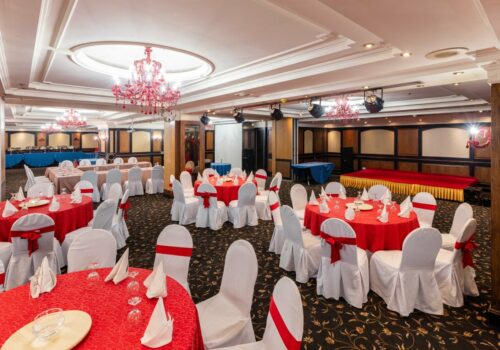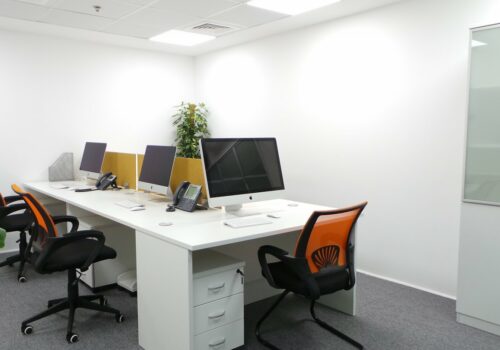What are Eco-friendly workspaces?
With the world shifting towards an eco-friendly and sustainable environment, it’s necessary to contribute in every way to this top-priority global initiative. Many top cities in the world have already taken the first step and built eco-friendly workspaces, buildings, and communities.
There are numerous initiatives to help us reach our goal of creating eco-friendly workspaces. This can be achieved through reduced energy consumption, conservation of resources, and switching to renewable energy sources. These changes not only benefit the environment but also demonstrate our commitment to sustainability, which reflects our goals to our clients, employees, and partners, who prioritize green practices. By focusing on energy efficiency and sustainable materials and practices, you can significantly reduce the environmental footprint of your workspaces.
A first step in that direction would be changing to an environmentally responsible workspace structure and resource-efficient, also called “Green offices”. These offices are designed in a way to is energy-efficient and includes recycled content. The objective here is to create a healthy environment, preserve energy and reduce pollution.
Natural Light is a great advantage in Dubai. By maximizing the use of natural light in Dubai offices we reduce the need for artificial lighting during daytime. Opting to be energy-efficient is simply done by using LED lighting in meeting rooms, serviced offices, and any kind of workspace since LED lights consume significantly less energy and have a longer longevity. Moreover, choosing to add occupancy sensors that automatically turn off lights and climate control systems when the workspace is not in use to reduce energy is a great plus!
Eco-friendly furniture is another great way to environmental sustainability; by choosing furniture made from sustainable materials, such as reclaimed wood or recycled materials like bamboo flooring, organic cotton curtains, or recycled paper products.
Implementing a recycling system in meeting rooms and shared offices, with labeled bins for paper, plastics, glass, and other recyclables will help minimize waste by using reusable and refillable items like water faucets instead of disposable water bottles.
Another way to avoid paper waste is digital documentation; by encouraging the use of digital documentation and presentations to reduce paper usage. And if we must use printed materials, recycled paper, and double-sided printing are a good replacements.
To build a more environmentally conscious society companies can focus on encouraging environmental education to inform their employees about environmental problems, this helps in raising awareness and understanding of environmental issues. It also seeks to foster positive values and attitudes towards the environment, encouraging people to take action to protect and sustain the environment that can extend beyond the workplace.
Many eco-friendly workplaces are actively adopting sustainability initiatives, prioritizing various eco-conscious practices and technologies to reduce waste and create a healthier, more environmentally responsible workplace. A few examples can be tree planting activity, supporting renewable energy projects, or community outreach programs, which contribute positively to the surrounding environment.
Masdar City in Abu Dhabi, UAE is a great example of sustainable urban living. It’s the world’s first carbon-neutral city with innovative technologies such as renewable energy sources, water recycling systems, and efficient waste management which make Masdar a hub for innovation in the field of sustainability and renewable energy, an example for all of us to follow.
To sum it up Eco or environmentally-friendly workspaces are set up with a focus on creating an environmentally sensitive, resource-efficient, and socially responsible space. There are numerous other factors to help the environment, and taking these first few steps will result in a positive outcome for our world.




